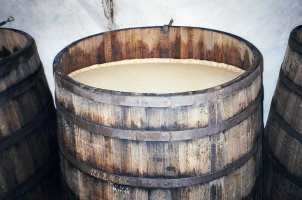In a brewery fermentation CO2 production and sometimes CO2 pressure is inevitable. How are you going to determine what CO2 vs pressure effect? I know an English ale fermented under pressure as low as 5 psi is a very bland affair compared with its equivalent fermented open. I wonder what effect periodic N2 pressure has on yeast in an open fermentation?
THE BRÜ LAB podcast Episode 041 | Pressurized Fermentation w/ Dr. Andrew Macintosh might answer your question.
































![Craft A Brew - Safale BE-256 Yeast - Fermentis - Belgian Ale Dry Yeast - For Belgian & Strong Ales - Ingredients for Home Brewing - Beer Making Supplies - [3 Pack]](https://m.media-amazon.com/images/I/51bcKEwQmWL._SL500_.jpg)































